What do authors really earn?
Author incomes have been in the news a lot recently. Look in one direction and you see a fresh influx of new full-time authors piling into a booming publishing industry in which pay rates for authors have dramatically increased over recent years. Look in another, and you see the grinding impoverishment of mid-list authors far below any prospect of ever achieving minimum wage levels. As always in publishing, and science fiction publishing in particular, abundance and scarcity coexist, powerful industry trends pass each other in opposite directions, and if you surround yourself only with individuals and communities on one side of the abundance/scarcity divide (or any one of the countless schisms), then you will be exposed to a highly distorted view of what’s actually happening in science fiction publishing.
In these articles on modern adult science fiction publishing (not YA – that works differently), I share some insights on the UK and US (because they are the markets I understand) from the perspective of somebody who has feet in multiple camps (being an SF author gives me license to extrude a multiplicity of limbs). I have not the slightest interest in persuading anyone that this way of writing is better than that, or that one publishing strategy is superior to another. I don’t even write them to help other authors make better-informed decisions, although I would be delighted if they help someone. I write them because science fiction publishing is such an exciting industry experiencing rapid change that sometimes I need to articulate what I think is going on. Once I’ve captured my thoughts in writing, my mind is then freed up to do what it really wants to do: create science fiction stories.
Constant calibration collaboration is a feature of modern SelfPub and NewPub publishing. Last month, I spent the day with one of the major new talents in British science fiction with the intention primarily of meeting them rather more than comparing notes on publishing. Yet within an hour or two, we were logging on to our Amazon publishing accounts and waving the graphs on our smartphones at each other to better discuss trends and strategies.
I had new book launches last month, and I’ve used them to check my working model of Anglo-American SF publishing in the area most important to me: Kindle sales. Neither excessive optimism nor pessimism helps me here. My family relies upon me to earn a decent living from my book sales, and I need to know how realistic it is for me to continue to do so.
And so I test my working model. Constant calibration. Since my income is derived from SF book sales, and not training, personal appearances, or Patreon, then my benchmark is the number of people I think are earning at least the national median income from selling science fiction books into the US and UK. I use sales in the loose sense to mean “someone reads/listens to my book and as a consequence I get paid”, and my working assumption is that around 250 to 300 people achieve that level of income, and around 75 to 80 percent of those individuals earn the majority of their income from self-publishing and NewPub (see this article for what I mean by NewPub ) as distinct from OldPub.
In order to check my figures, I’ll be using a tool called the Amazon author rank. This works in a similar way to the ranking for individual titles, but sums up sales for a particular author. And since I will be looking at the science fiction author rank, Amazon will only combine the titles published under my name that have been categorized as science fiction. It only considers sales from Amazon.com, and not other international stores. To begin with, we’ll also restrict author rank to Kindle sales only.
Before we jump into some graphs, I will note another change I spotted in science fiction publishing over the past six months. For many years now, if you looked at the science fiction authors whose book sales have reached a level that they can quit the day job and become a full-time writer (I emphasize again through sales rather than Patreon and other non-sales income) you will see that traditionally published authors have been outnumbered by self-published ones.
Until now.
A while ago, I explained the failure of the terms self-publishing and traditional publishing to describe a major new form of publishing that I call NewPub. In the past six months, of the authors quitting the day job to go full-time with whom I am personally acquainted, most are primarily NewPub. I find this an exciting moment that very few people are talking about. Right now, if you are becoming a full-time traditionally published science-fiction writer (and, again, I emphasize you are doing so through your book sales and not Patreon et cetera) it seems that you are less likely to be doing so through OldPub imprints such as Tor, Gollancz, Angry Robot, Harper Voyager, Transworld and the like; you will be doing so through the likes of Chris Kennedy Publishing or LMBPN.
I realize I’m being overly cautious here. The comparison is not even close. Maybe it’s a blip – I suspect it is – but as a vehicle to earning a living as an SF writer NewPub has been wiping the floor with OldPub recently.
Fascinating times.
A career in author rankings.
To begin with, let’s look at my author ranking since Amazon introduced the system in 2012. It’s a bit of a stroll down memory lane, but it does teach a few lessons. Nonetheless, if you want specific takeaways that we can learn about publishing today, you can skip to the next section and the graph from July 2018.

Although I had several books published on Amazon between 2011 and the end of 2014, my primary focus was publishing other authors through my Greyhart Press business. The author rank reflects my sales as Tim C. Taylor, and not the books from other authors that I published. So let’s skip to the dramatic jump at the start of January 2015. That was when I turned my focus from Greyhart Press to publishing myself and the launch of the first two Human Legion novels within days of each other over Christmas 2014.
I spent the first half of January as the fourth bestselling science-fiction author on Amazon.com (can you guess who was in the first three places?) That equated to an average of about 1,300 sales per day on Amazon.com. I then spent almost the entirety of the first six months in the top 100. (The answer, BTW: A.G. Riddle, Andy Weir, and George RR Martin whose Game of Thrones books were classified as science fiction. I didn’t mind being behind these three multi-million selling megastars!)
You can see another peak at June 2015. That was the release of Renegade Legion, the third novel in my series, which brought a big uptick in sales of the first two books.
The next peak is from the release of Book4 and the Empire at War anthology. OK, you ge the picture… a new release comes out, and you can see the author rank rise.
At least, as an author, that’s what you want to see. But by the time the fifth Human Legion book was released early in 2016, my co-writing experiment had broken down completely, and the wheels had temporarily come off the Human Legion cart. You can barely see the release in this chart.
Fast forward to the end of 2016 and things looked dire indeed. I was earning nowhere near enough to pay my cost of living, and my efforts to create a new successful series (Revenge Squad) been a commercial disaster.
With the earnings in 2015 still in my back pocket, I decided to call it a day. I started shutting down business relationships, readied to close down Greyhart Press, and decided to cap off the Human Legion and Revenge Squad series with books I didn’t expect to sell well. I also resolved to have a little fun by answering some of the many requests I get to write short fiction for anthologies. 2017 was to be my orderly withdrawal, after which I would shut the door and walk completely away.
However, the author rank graph belies my expectations. The big rise in sales didn’t come from a new release under my name, it was due to the success of JR Handley, an author I launched with his own spin-off series called the Sleeping Legion. You’re not seeing JR’s sales in this graph, but you are seeing the surge in interest his series caused in my backlist.
Fall 2017 sees another peak as two of the anthologies I’d written for launched and sold really well (one in the Four Horsemen Universe, and one in Nathan Hystad’s Explorations series). 2018 has seen further peaks from my novels released in the Four Horsemen and Human Legion universes.
So what does this tell us? It shows time and again the huge benefits if you have a deep backlist and can reignite interest in your earlier books.
It’s not my intention of interest in this series of articles to suggest that one publishing strategy is superior to another. However, my own takeaway for my own career is to write in multiple series and to write in styles and forms that vary, but don’t jump about too much. I am proud to have written fantasy, young adult, romance, hard SF, and philosophical science fiction. But most of those examples I have now removed from publication, and if I write in those styles again, I would do so with a pen name.
Close up on July 2018

Let’s jump to a close-up view of mid-July 2018.
The graph here is very spiky. Amazon has been making dramatic changes in their sales reporting in recent months. No one outside of Amazon is quite sure what’s happening, though we suspect it’s a side effect of trying to clamp down on fraud. The effect on me is to see my sales reported in fat chunks, where previously it had been a steady near real-time reporting.
Back in 2015, I could tell you that Monday through Thursday, I would see a surge in sales as East Coast America bought my books at lunchtime whereas West Coast America surged more when people got home from work. Now it’s lumpy. But it’s simple enough to average out over the course of a couple of weeks or so.
So, what are we seeing here exactly? And how have I used this to calibrate my model of science fiction publishing?
At this time, I was promoting the launch of the final Human Legion novels, and backing it up by a $0.99 special offer on all my previous Legion titles. Almost all of the sales you see reflected in this author ranking came from just ten titles, seven of which I self-published, and three were traditionally published.
My ranking (which is the Kindle sales only – we’ll get to audiobooks and paperbacks in a moment) is almost a spiky sine wave oscillating between 150 and 200.
What I’m about to do here is make a quick reality check: does this latest set of numbers appear to support my current model for science fiction publishing? I’m not trying to prove anything or persuade anybody – just a quick and dirty validation – so I’m perfectly comfortable in looking at this chart and saying my average ranking was halfway between 150 and 200. I’m going to say I ranked 175 over the period.
All right now. Let’s take a first pass of these numbers and challenge my assumptions in a later section.
Over the 16-day period, my self-published titles (under my own name) sold 945 copies and had 270,000 Kindle Unlimited (KU) page reads. Now, KU causes no end of problems with the numbers. In our case, the biggest problem is that people will have been borrowing the book in this period (downloading the title contributes toward the ranking) but I don’t see the page reads come in until later. Whenever I talk about sales, I mean a loose definition in which someone reads my book and I get paid for it. In the first pass, I’m going to simply count the page reads and divide by the Kindle Normalized Page Count for each title to get an idea of the number of people who have read my book in KU. Bear in mind that this will significantly undercount both my number of readers and my eventual revenue.
Anyway, add together conventional sales and KU reads, and I come to 92 sales per day that I can see in my sales reports.
But I’m only counting self-published titles, and the author ranking includes my traditionally published ones. I can safely ignore all but four (because they are anthologies that never sell) and having tracked their sales rank carefully, I’m confident in an estimated sales figure to bring me up to 110 sales per day.
Over the past two years, my average income per sale/borrow has been $2.63.
So that’s $289 per day of gross income. Or $106,000 per year.
But all of this only counts sales on Amazon.com.
When I look back over several years of my own sales data, I see that Amazon.com accounted for 77 percent of my Kindle sales. Factor in the rest of the world, and that brings us to an annual gross income of $137,000 for a science fiction author rank of 175.
Of course, as we saw from the earlier graph, an authors ranking goes up and goes down, but those who successfully develop depth in their backlist do often see a smoothing of the rank.
Also, I reckon that $2.63 average is fairly typical for an author who is largely self-published, but of course those traditionally published with OldPub will earn considerably less per sale.
And we haven’t even begun to talk about audiobooks, where many SelfPub and NewPub authors are earning a lot of money. (I’m going to say indie from now on to mean “ SelfPub + NewPub”)
On the other hand, we’re only talking about gross income here. We haven’t considered costs. I will state very strongly for the benefit of anyone who believes I owe them money (I’ll have the money next Tuesday, honest) that I haven’t just made big wads of cash. Firstly, the conventional sales of my $0.99 books only earn $0.35 (though when averaged with KU borrows of the same titles, during July my $0.99 titles have earned me an average of $1.10 and rising). Even more significantly for anyone thinking I’m now loaded, once I saw that sales were doing better than expected, I reinvested most of that money into advertising them. In fact I spent considerably more money on adverts last month than in the preceding seven years.


Two of the adverts. I tried out over 50 adverts with variations of text and images. The advert above with the spaceships outperformed this red one by 3 to 1.
But I’m moving ahead of myself and challenging the numbers too soon. I came into this exercise with a working assumption that there were around 250-300 science fiction authors earning at least the national median income for a full-time worker through book sales to the Anglo-American science fiction market, and that of this group, indie authors outnumbered their OldPub colleagues by about 4 or 5 to 1.
If anything, this exercise in calibration leads me to think that I may be too conservative in my estimates. At a rough guess, I would say an indie science fiction author who typically spends their time ranked 200-300 – maybe little lower even than that – but has significant peaks during major new releases, is probably bringing in a six-figure gross income from Kindle sales, and in many cases a significant amount on top from audio sales.
The doesn’t consider costs, of course. And many authors are reporting that costs are going up.
So let’s kick the tires
Kindle versus audiobook versus print editions.
Up until this point, I’ve selected the graphs so it considers the ranking only for sales of the Kindle editions. But you can also see author rank across all formats (i.e. includes paperback, hardback, and audiobook). How does that change things, especially given that traditional OldPpub imprints place much greater emphasis on print sales?
It would be tempting to think that if we switch to the all-formats ranking, that the indies who we know excel at Kindle sales would be displaced by a cohort of frontlist OldPub authors of the caliber of John Scalzi, N.K. Jemisin and Alistair Reynolds.
In fact, what we see is very interesting. If we look at the top 100, then we do see little of this displacement effect as the big publishers muscle in with their hardback and paperback sales. This is especially true of any titles linked with a major motion picture or TV series. But this only goes so far. Top-100 indies will typically see their ranking drop 10 to 15 percent when they switch from Kindle-only to all-formats author ranking. But as you go further down that ranking, the significance of switching from Kindle to all formats rapidly dissipates until as you get to the lower reaches of the top 1000, it’s barely noticeable.
Remember, I’m primarily doing this to figure out how likely it is that I can continue to earn a living writing science fiction books. And for that I want to try to estimate how big the market is. So this is not good news for me. If I switched from Kindle to all-formats ranking and saw my position drop several hundred places, it would tell me that there’s a very large number of print or audiobook sales that were getting read, but I wasn’t currently accessing. I don’t see that. Especially when combined with the claims that last year Amazon.com might have outsold Barnes & Noble as the biggest seller of paperbacks in the US (I’m not sure I believe that, but I do accept that Amazon.com online sales are fast approaching Barnes & Noble brick and mortar ones). Outside of the very top tier of titles (for example, Handmaid’s Tale) the most likely interpretation is that most science fiction sales on Amazon.com are in the Kindle format, which is where I already make my living.
There is an alternative explanation. Many of the top indie science fiction authors have extremely healthy audio book sales. Perhaps there are more science fiction paperback sales at Amazon.com then I realize, but that is obscured because midlist indie authors are not only outselling OldPub authors in the eBook formats, but in audiobooks too.
Yes, but you are doing a $0.99 sale!
In terms of revenue, I cut mine by putting almost an entire series on a deep temporary discount. I cut even more significantly by reinvesting most of the sales in advertising myself and JR Handley. So is it realistic to say an average revenue for an indie sale is $2.63?
It’s a very fair question, and difficult to answer. A temporary $0.99 sale of the title, aligned to a book deal, is certainly a way to spike sales and thus rankings. At any given time, a proportion of the top 200 authors are only there because of a $0.99 Bookbub deal (a very effective and much sought after form of advertising). But most are not. Bookbub deals are like hen’s teeth, after all. I’ve never managed to get one for myself. It’s much more common for top 250 authors to get the mass of their sales from a significant number of backlist titles that individually are modestly ranked (say, 5,000 – 20,000).
That $2.63 figure is from actual data, and does include promoted sales I have made at $0.99, but I accept that the ability of a $0.99 Bookbub deal to spike author rank means the average indie revenue of $2.63 is probably too high, but not by a huge amount.
And you write such big books!
There’s a definite trend in indie publishing to release titles more frequently, but for each title to be shorter. An SF novel of only 60,000 words is now commonplace (as it has been at various times in the past, such as the 1960s) whereas mine tend to come in at around 110,000. That’s significant, because under the Kindle Unlimited pay scheme, the bigger the book, the more you get paid when somebody reads all the way through. The first Human Legion novel, for example, is a meaty tome. I get paid around $4.00 whenever someone borrows it in Kindle Unlimited and reads to the end.
However, hold your horses! There’s also another trend for the more successful indie authors to take advantage of their branding success and raise prices. I haven’t done this. I want to do so, but my branding isn’t strong enough yet. So my $2.63 average revenue is high because most of my best-selling titles are in Kindle Unlimited and my books are relatively lengthy. And at same time, my $2.63 revenue is low, because most my titles are priced lower than the average. Which trend is stronger? According to my back of a beer mat calculations, roughly speaking they cancel each other out.
Uncle Jeff’s additional data point.
In a note to stockholders in the recent Amazon annual accounts, Amazon CEO Jeff Bezos mentioned that in 2017, there were over 1000 authors paid in excess of $100,000 by Amazon Kindle Direct Publishing. Kindle Science fiction is booming but not as much as romance. Thrillers and fantasy sell very well too. I could believe maybe 200 of those over-a-thousand science fiction authors were grossing six figures, but get much higher than that and you start to contradict Jeff Bezos, and Jeff really does know the data.
But we are doing a rough reality check here. I started with the assumption that maybe 250 to 300 people earn a full-time living solely from their science fiction book sales. I never said they earned that solely from Amazon book sales. Let’s pick a figure in the middle of 275, and then take off 50 OldPub authors to give us a target of 225 who earn a living.
The Bureau of Labour Statistics (May 2017) lists median annual income for employed individuals in the US as $37,690. The UK median income for full-time employees (2014) is £27,194 or at current exchange rate, $35,400
I’m saying that at $2.63 gross income per sale, that the top 175 ranked authors are on an annualized rate of $135k gross from Kindle sales.
If we want a neat annualized target of $100,000 gross sales, then it’s not too much of a stretch to say that the boundary where this is achieved is somewhere between the SF author ranks of 200 and 250.
But some authors find their author rankings fluctuate significantly over time, slipping back after the uplift of each new release. And in any case, $2.63 is slightly too high because the frequency of 99c sales, and is much too high in the case of OldPub authors, who earn much less from sales (though they do get advances).
What’s more, even Jeff Bezos doesn’t know how much authors are spending on advertising at platforms such as Facebook. Anecdotal evidence is that an increasing number of indie authors are spending serious money on advertising. I reinvested most of my income from my sale into advertising, after all. And yet there are others for whom all the advertising they ever needed to become million-selling authors is to write the next book.
How can I stretch from estimating gross income to a net one of around $37,000? Well, I can’t. This is where I move into conjecture.
But that’s to be expected. The data are noisy. We must make educated guesses. But I’m doing this for a reality check. Is this exercise compatible with the estimate that there are 250-300 individuals in the cohort in which I wish to remain (full-time SF writer earning median national wage from US & UK book sales — for which these days I need to apply a rolling average to fit in)?
No.
Looking over the numbers, I think I’m being a touch too pessimistic, so I’m upgrading the “250-300” estimate to “around 300”.

My next big project.
A Parting thought: things in SF might not be as bad as you think.
Talk to different science-fiction author communities and they will give you wildly different views on the health of current SF publishing. And that’s just considering the old heartlands of the US and UK market (very exciting things are helping elsewhere in the world). One thing everyone agrees upon is that it is very difficult to sustain a career as a science fiction author where sales and royalties are enough in their own to earn you a decent living wage. Even though it seems that more authors are earning a living writing adult SF than at any time in history, there is also more intense competition than ever before. And I reiterate: I have no interest in championing one group of authors over another, or in suggesting that any other author should follow the strategies and tactics that I have chosen for myself.
It pains me to see people who care about science fiction talk about it as if it’s in some kind of crisis. “Earning a living as a science fiction writer is no longer realistic prospect.” That’s something I continue to hear, mostly from legacy mid-list authors and legacy fandom.
I’ve spoken to authors myself who have found themselves out of contract and having to find new ways to keep writing, such as tie-in novels and writing for games companies. So I know the distress is real. I do not seek to diminish it by pointing out statistics that suggest other authors are currently enjoying a boom.
Nonetheless, a feature of modern science fiction publishing is that there’s a large number of people who are earning a living from books that never make the top 100 of major Amazon sub-genre categories, such as space opera, and yet can still gross a six-figure income from book sales. If you’re not into the new waves of science fiction, then chances are, you will be completely unaware of their existence. And there are a lot of these people earning a living. Hundreds.
In the decade before I became a full-time writer/ publisher in 2011, I was fascinated by everything to do with science fiction publishing. I got my information from small publishers, traditional fandom, WorldCon, Eastercon, Fantasycon, SFWA, British Science Fiction Association, SFX Magazine, Guardian books, Strange Horizons and their ilk. I subscribed to Locus Interzone, Asimov’s, F & SF, and Analog. I bought books from Harper Voyager, Tor, Gollancz, Orbit, Transworld, Angry Robot, Solaris and the like.
With a handful of notable exceptions, commentators from this legacy side of science fiction are largely ignorant of and uninterested in indie SF, and never were much interested in tie-in novels and certain publishers who worked a different way, such as Black Library, and to an extent Baen Books.
And why should they? None of these publications and societies have a remit to represent all of science fiction. And I only call it legacy SF because it’s left over from what went before, not because it’s moribund. It’s exciting and is in flux too.
However, if you’re someone who doesn’t venture much outside of the legacy SF world, but are worried by talk of full-time SF writing no longer being a realistic prospect, then I hope you will take some comfort from the realization that most Anglo-American adult science fiction literature is being written, consumed, and commented on outside of this legacy community. Most full-time authors are content to sit on the outside. At a commercial level, at any rate, science fiction publishing is in robust health, and I for one am fascinated to see where it’s headed next.



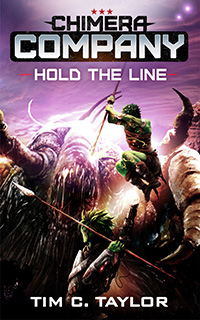
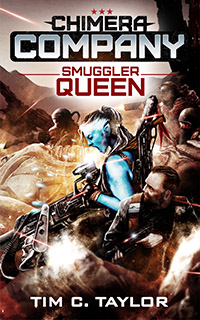

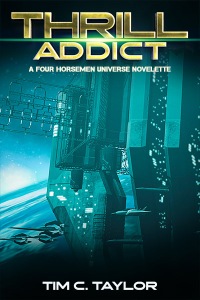
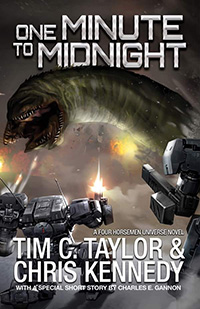
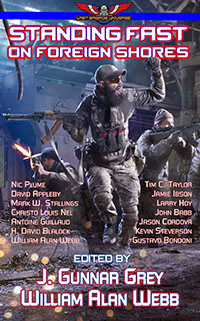



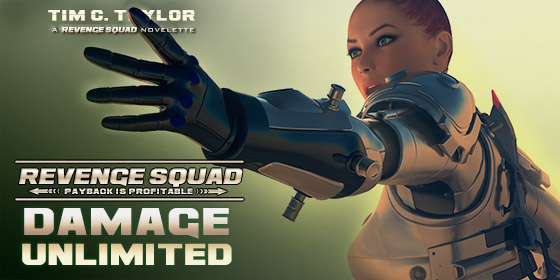

Thanks, Mark. It’s a hard old business. I still think anyone starting out writing science fiction with the intention of making a solid career of it is nuts, unless they love writing for its own sake (and even then…). Nonetheless, I find it reassuring to know there’s a lot more money out there for the authors than a decade ago.
Excellent article, Tim!
For writers, publishing remains a tough, competitive business. But for readers it’s a great age–more variety, more voices, and space freighters full of fun, new science fiction.
As a writer, the pace of change makes me nervous, but the opportunities excite me.
Thanks for writing this!